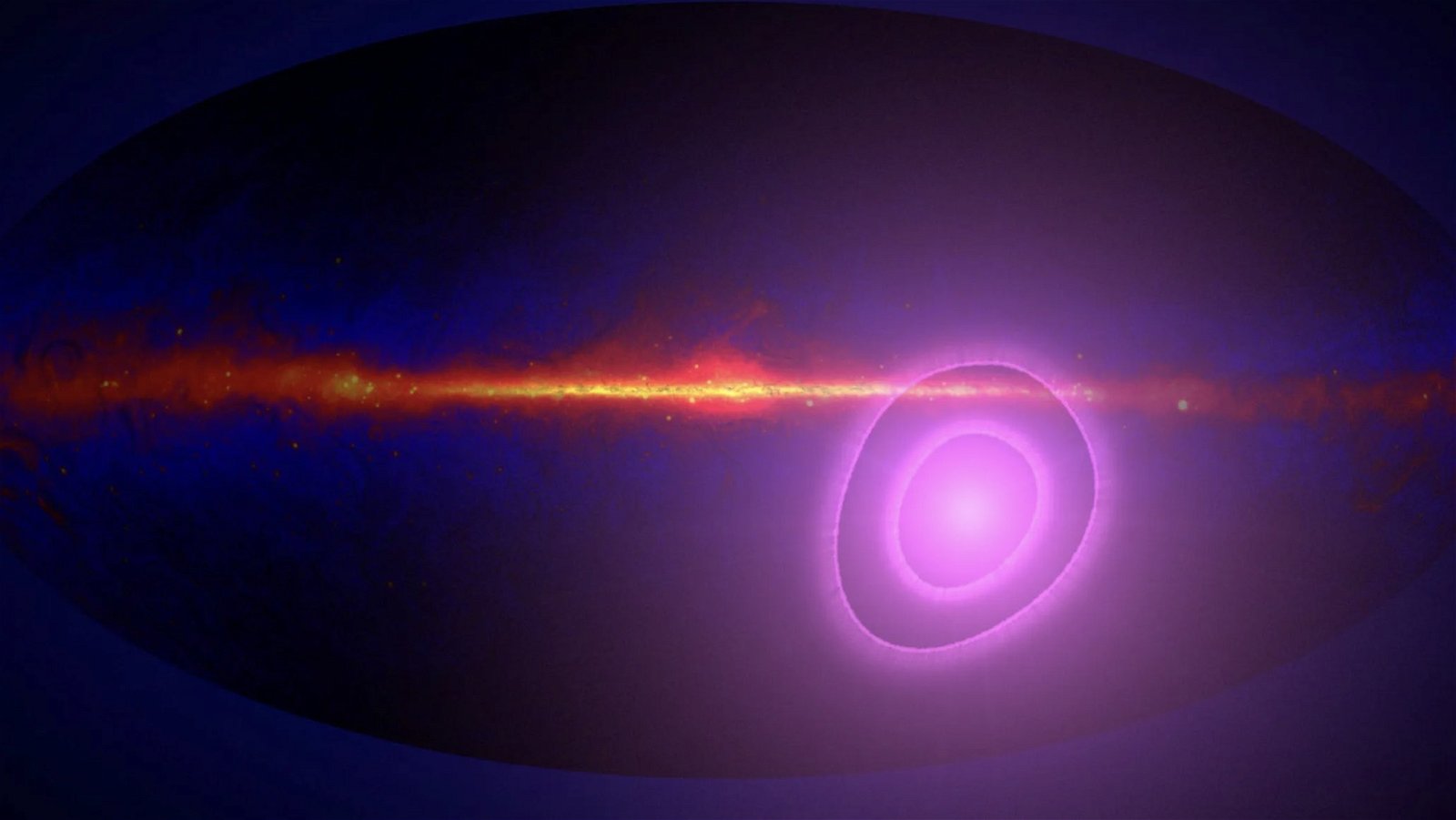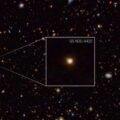Astronomers report the unexpected discovery of a gamma-ray signal emanating from outside our galaxy that they can’t yet explain, according to newly published research that may offer new insights into an existing cosmic mystery.
Discovered within more than a decade of data collected by NASA’s Fermi Gamma-ray Space Telescope, the unusual energetic feature is located in almost the same direction as a previous discovery involving an unresolved feature associated with highly energetic particle emissions.
While searching for a gamma-ray feature associated with the cosmic microwave background, a much stronger signal was detected emanating from a different region of the sky, according to cosmologist Alexander Kashlinsky at the University of Maryland and NASA’s Goddard Space Flight Center.
The cosmic microwave background, or CMB, is a remnant of the universe in its most primordial stage, visible as a nearly uniform faint glow detectable with sensitive radio telescopes that fill all the space in the observable cosmos.
First detected in 1965, the CMB is likely the result of the cooling of the initially superheated and expanding universe, which allowed the formation of the first atoms and produced a burst of light still faintly detectable today. Studies that followed led astronomers to recognize that the CMB possesses a dipole structure, where a slight concentration of microwaves is detectable in the general direction of the constellation Leo, and an equal cooling (of around 0.12%) is detectable in the opposite direction.
This unique feature could be an artifact that results from the 230-mile motion of our solar system in relation to the CMB, which some astronomers think may be what produces the apparent dipole signal. However, the CMB has been the only astrophysical energy source of its kind that has undergone precision measurement, and similar measurements of other cosmic features could allow astronomers an opportunity to test whether the dipole feature really does arise from the motion of our solar system.
For years, Fermi’s Large Area Telescope (LAT) has completed scans of the entire sky several times each day, resulting in a tremendous amount of data that the team involved with the recent discovery decided to scour for evidence of a potentially related dipole emission pattern. In theory, a gamma-ray dipole would be amplified by close to five times over its counterpart already known within the CMB.
Looking at 13 years of Fermi LAT data comprising gamma rays above 3 billion electron volts (GeV), the team removed all known and identifiable sources and focused on the extragalactic gamma-ray background.
The search paid off, although the astronomers didn’t quite find what they were looking for.
“We found a gamma-ray dipole,” said Goddard astrophysicist Chris Shrader with the Catholic University of America in Washington in a statement.
“[B]ut its peak is located in the southern sky, far from the CMB’s, and its magnitude is 10 times greater than what we would expect from our motion,” said Shrader, who is the co-author of a new paper describing the discovery.
Although the gamma-ray dipole was not what they had been seeking, Shrader says that the team believes it could be somehow related to a similar known feature, which is associated with some of the strongest known cosmic rays, comprised of accelerated charged particles like protons.
Ultrahigh-energy cosmic rays (UHECRs)—the strongest variety ever detected—remain mysterious to astronomers, as their origins remain undetermined. Despite the questions scientists have about them, one thing that is well known is that they carry energies greater than one billion times that of 3 GeV gamma-rays.
Intriguingly, this similar dipole feature has been recognized since 2017 that appears to arrive in the same direction as these mysterious UHECRs, based on observations made at the Pierre Auger Observatory in Argentina. Also of interest is that the feature’s strongest concentration appears in a sky location similar to that of the team’s more recent gamma-ray discovery, and that each concentration possesses a magnitude of about 7% greater than average coming from one direction. Much like the CMB dipole, the UHECR dipole also features a proportional decrease in the opposite direction.
A causal relationship between the two phenomena is likely to exist, the team believes, pointing to either an as-yet unidentified source that unites them or the possibility that separate sources requiring unique explanations for both may be required.
Kashlinsky called the team’s findings “a completely serendipitous discovery,” but one that now points to broader questions about the mysterious nature of the cosmos.
The team’s new paper, “Probing the Dipole of the Diffuse Gamma-Ray Background,” by co-authors Alexander Kashlinsky, Fernando Atrio-Barandela, and Chris Shrader, appeared in The Astrophysical Journal Letters on January 10, 2024.
Micah Hanks is the Editor-in-Chief and Co-Founder of The Debrief. He can be reached by email at micah@thedebrief.org. Follow his work at micahhanks.com and on X: @MicahHanks.

